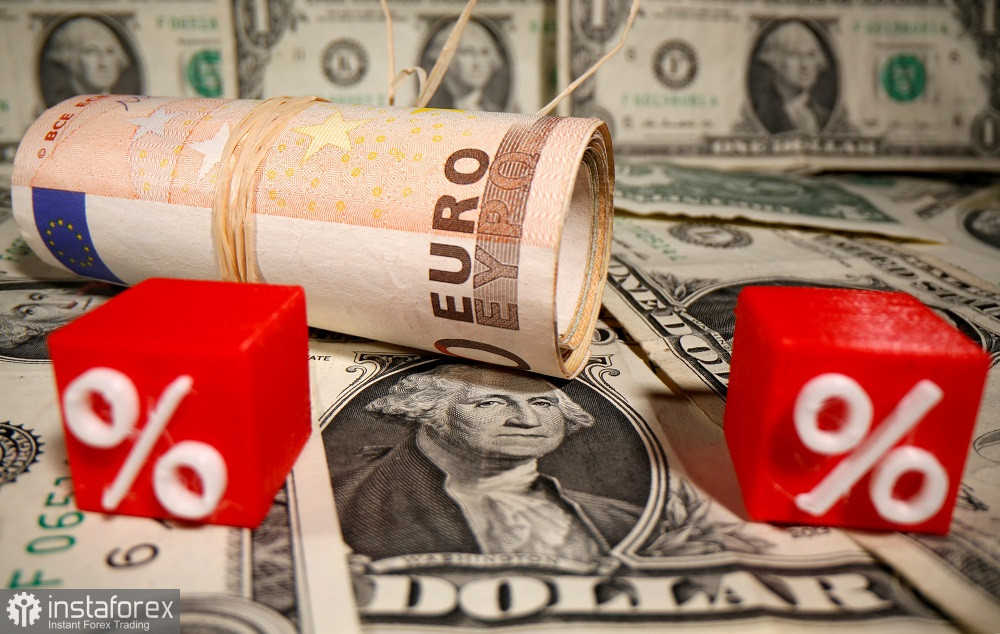On December 12, the most significant trading week of the current month started, not only for the euro-dollar pair but also for all dollar pairs of the major group. The five-day trading week concentrated the most important events of a fundamental nature: on Tuesday, key U.S. inflation data will be published; on Wednesday, the results of the December Fed meeting; and on Thursday, the European Central Bank will make its verdict. In addition, the Bank of England and the Swiss National Bank will hold their meetings this week.
By and large, this is the final accord of the year. The central banks of leading countries will summarize the results, outline future outlooks and take a break till January–February. The volatility storm will gradually subside by the end of December, and the market will fall into a state of anabiosis for the period of pre-New Year's and post-New Year's cavalcade. Low liquidity, of course, will sometimes provoke abnormally high volatility on the market, but such price bursts, as a rule, are short-term.

In general, the events of this week will be fundamental for many currency pairs of the major group. Above all, for the euro-dollar currency pair.
Over the past few weeks, currency market experts have been discussing in absentia about the Fed's further actions. Back in late autumn, when the first signs of a slowdown in inflation growth in the United States appeared, many analysts assumed that the members of the American regulator would at least take their foot off the gas, and at most they would press the brake pedal. A resonant report on the growth of the consumer price index for October showed that not only general, but also core inflation is slowing in the United States. And although some representatives of the Federal Reserve urged (and still urge) not to make hasty conclusions based on only one report, the flywheel of "dovish" forecasts began to actively unwind, exerting the strongest pressure on the dollar.
In fact, the greenback has become a victim of soft market expectations, although the intrigue regarding the outcome of the December Fed meeting still persists. It should be emphasized that the current situation is quite dangerous for EUR/USD buyers, since the bulls of the pair put everything on the line of the dovish scenario—they went all in.
But if the Fed suddenly fails to meet its expectations, the dollar will be able to restore lost positions very quickly, at least partially. For instance, in pair with euro, the greenback might return to the 1.0250–1.0390 range with a prospect of further decline to the parity level.
Notably, the intrigue of this year's last Fed meeting is not the scale of the December rate hike. The probability of a 50-point increase is now more than 80%, which means that the market has almost no doubt that the regulator will break the series of 75-point hikes. The key intrigue lies in the further pace of monetary policy tightening. For instance, last week, Danske Bank experts updated their forecast: now they believe that the Fed will raise the rate twice by 50 points (in December and February) and once by 25 points (in spring), after which they will take a wait-and-see approach. According to other analysts, the regulator will move in 25-point increments after the December meeting.
Moreover, the market is actively debating at what level the final point of the current monetary policy cycle will be; at what point the Fed will decide to pause in raising; when and under what conditions the central bank will be ready to step back, i.e. to start cutting the interest rate.
Obviously, the Fed won't answer all of these questions outright. Therefore, traders will scrupulously study the language of the accompanying statement and analyze the tone of Jerome Powell's rhetoric. And here it is necessary to warn readers again about the high degree of uncertainty: in my opinion, the market believes too categorically that the December meeting will be of a "dovish" nature. Although earlier (in October–November), the head of the Fed voiced rather hawkish signals, while allowing for a slowdown in the pace of monetary tightening. Powell's main message can be summed up in one phrase: "it's not the speed that matters, but the location of the final stop." Also, the head of the Fed has repeatedly stated that the regulator will not cut rates or pause if inflation starts to slow down.
If Powell announces all the above-mentioned "hawkish" theses during the final press conference, the dollar will be in high demand, especially considering that the market has long won back the slowdown in the tightening of monetary policy (since the minutes of the previous Fed meeting were published).
Also, do not forget that the day before the announcement of the results of the December meeting, key U.S. inflation growth data for November will be published. A strong inflation report will completely redraw the fundamental picture for the EUR/USD pair, even before the meeting of the American regulator.
Thus, given the high degree of uncertainty and, in my opinion, overestimated expectations of a "dove" nature, it is most expedient for the euro-dollar pair to take a wait-and-see position and stay out of the market.
 English
English 
 Русский
Русский Bahasa Indonesia
Bahasa Indonesia Bahasa Malay
Bahasa Malay ไทย
ไทย Español
Español Deutsch
Deutsch Български
Български Français
Français Tiếng Việt
Tiếng Việt 中文
中文 বাংলা
বাংলা हिन्दी
हिन्दी Čeština
Čeština Українська
Українська Română
Română

